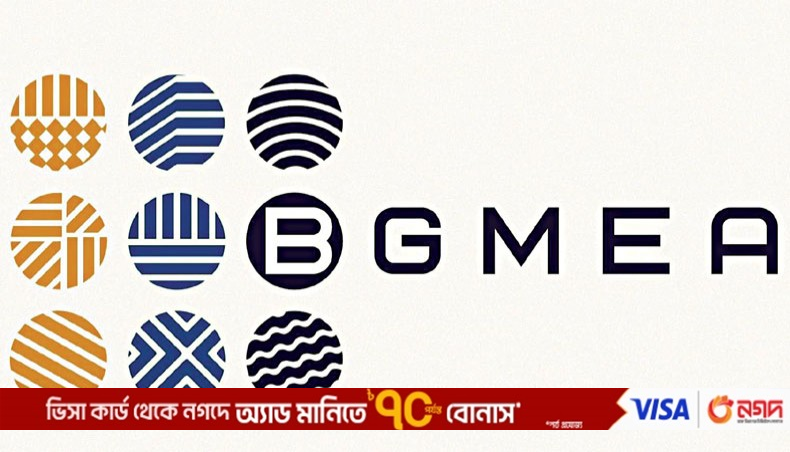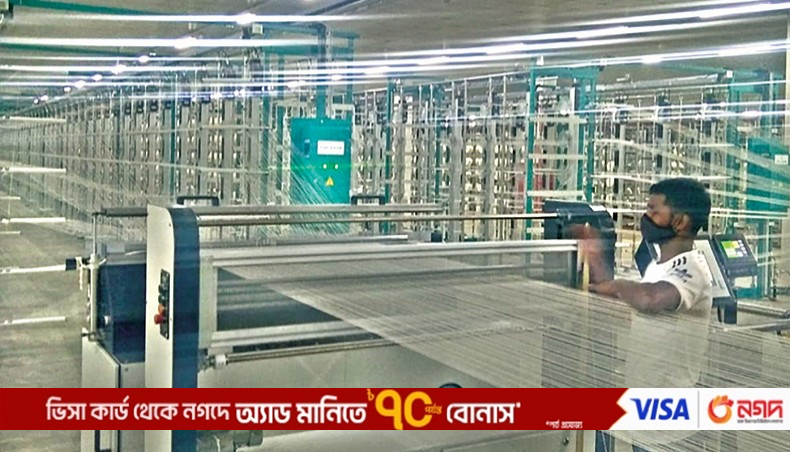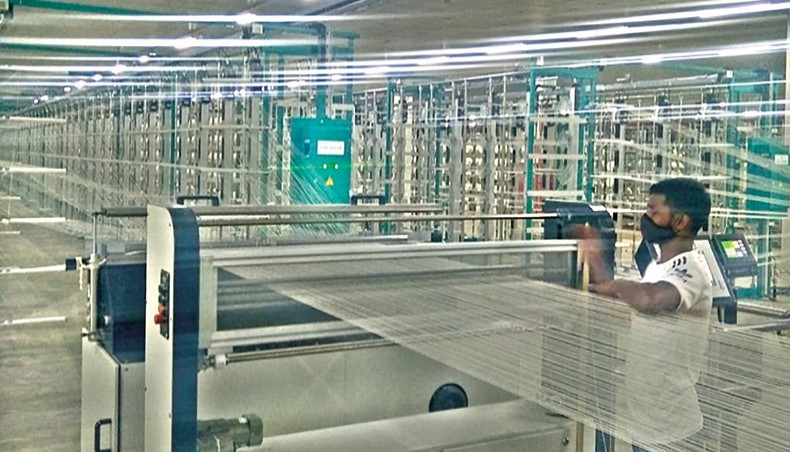Policy initiatives
The economic reforms initiated in the 1980s played a pivotal role in shaping Bangladesh's garment industry. The government, recognising the potential of the sector, implemented policies aimed at attracting foreign investment and fostering a conducive business environment. Incentives such as tax breaks, the duty-free import of machinery, and streamlined export procedures helped create a favourable climate for the growth of the garment industry.
Labour force
One of the key factors that propelled Bangladesh's garment industry onto the global stage is its abundant and cost-effective labour force. The country's population density and low wage rates attracted international apparel brands and manufacturers seeking to optimise production costs. This competitive advantage allowed Bangladesh to offer affordable clothing to consumers worldwide, fostering sustained demand for its products.
Participation in international trade agreements and preferential market access further boosted Bangladesh's garment exports. Agreements like the Generalized System of Preferences (GSP) provided the country with tariff advantages in key markets, facilitating increased export volumes. The strategic positioning of Bangladesh in proximity to major consumer markets, such as Europe and North America, also contributed to its accessibility to global supply chains.
While the growth of Bangladesh's garment industry has been remarkable, it has not been without challenges. The sector has faced criticism and scrutiny over issues such as labour rights, workplace safety, and environmental sustainability.
The rapid expansion of the garment industry in Bangladesh has raised concerns about working conditions and labour rights. Incidents such as the Rana Plaza collapse in 2013, which claimed the lives of over 1,000 garment workers, highlighted the need for improved safety standards and worker welfare. International pressure and advocacy have since led to increased awareness and efforts to address these issues.
In response to growing environmental awareness, there is a notable shift towards sustainable practices in the garment industry. VISUAL: STAR
Environmental sustainability
The textile and apparel industry is notorious for its environmental impact, and Bangladesh's garment sector is no exception. The excessive use of water, chemicals, and energy in the production process has raised environmental concerns. Efforts are being made to adopt sustainable practices, with some manufacturers investing in eco-friendly technologies and processes to reduce their carbon footprint.
Global economic uncertainties
The garment industry is sensitive to global economic fluctuations and uncertainties. External factors such as economic recessions, trade tensions, and the impact of unforeseen events such as the Covid-19 pandemic can disrupt supply chains and affect demand for apparel. Navigating through these uncertainties requires resilience and adaptability.
Future prospects for growth
Despite the challenges, Bangladesh's garment industry continues to exhibit resilience and adaptability. The sector's prospects for future growth are shaped by a combination of factors, including technological advancements, sustainability initiatives, and changing consumer preferences.
The adoption of Industry 4.0 technologies is poised to revolutionise the garment manufacturing process in Bangladesh. Automation, artificial intelligence, and data analytics are being integrated into production systems to enhance efficiency, reduce costs, and improve quality. Embracing these technological advancements will not only boost productivity but also position Bangladesh as a competitive player in the evolving landscape of smart manufacturing.
The demand for environmentally friendly and socially responsible fashion is on the rise, and Bangladesh’s garment industry can tap into this trend by aligning its practices with consumer expectations. VISUAL: STAR
Sustainable practices and ethical manufacturing
In response to growing environmental awareness, there is a notable shift towards sustainable practices in the garment industry. Bangladesh has started to embrace eco-friendly initiatives, such as using recycled materials, reducing water consumption, and implementing waste management strategies. Adopting fairer manufacturing practices is not only an ethical imperative but also a strategic move to meet the demands of environmentally conscious consumers and comply with international standards.
The environmental impact of the garment industry is a global concern, and sustainable practices are crucial in mitigating this impact. Ethical manufacturing entails adopting eco-friendly production processes, reducing water and energy consumption, and minimising waste. By embracing sustainable practices, Bangladesh's garment industry can contribute to global efforts to address climate change and environmental degradation, showcasing a commitment to responsible business practices.
Consumer preferences are also shifting towards sustainable and ethically produced products. The demand for environmentally friendly and socially responsible fashion is on the rise, and Bangladesh's garment industry can tap into this trend by aligning its practices with consumer expectations. Sustainable and ethical manufacturing not only attracts conscious consumers but also opens up new market opportunities and strengthens brand loyalty.
Compliance with international standards
Many global retailers and consumers scrutinise the practices of suppliers, and compliance with internationally recognised standards ensures market access and fosters trust. Bangladesh's garment industry, by prioritising sustainability and ethics, can position itself as a responsible participant in the global supply chain.
In fact, sustainable practices and ethical manufacturing contribute to the resilience of Bangladesh's garment industry. Addressing labour rights issues and ensuring workplace safety can prevent disruptions due to strikes or accidents. Environmentally sustainable practices reduce exposure to regulatory risks and enhance the industry's adaptability in the face of changing environmental regulations and consumer expectations.
The sector’s prospects for future growth are shaped by a combination of factors, including technological advancements, sustainability initiatives, and changing consumer preferences. ILLUSTRATION: AFIA JAHIN
Innovation and technological advancements
Embracing sustainability often involves adopting innovative technologies and processes. Sustainable practices can drive technological advancements in the industry, enhancing efficiency and reducing environmental impact. By investing in research and development of eco-friendly materials and production methods, Bangladesh's garment industry can position itself as a hub for innovation and sustainable manufacturing.
Diversification and value addition
To mitigate risks associated with overreliance on a single sector, Bangladesh's garment industry is exploring diversification and value addition. Rather than solely focusing on low-cost mass production, manufacturers are venturing into high-value segments, including customised and niche products. This strategic shift allows Bangladesh to cater to diverse market demands and create a more sustainable and resilient industry.
Bangladesh's garment industry has historically been focused on mass production of basic apparel items. Diversification involves expanding product lines to include a wider array of garments, from high-end fashion to niche markets such as sportswear, athleisure, and sustainable fashion. This strategy helps mitigate risks associated with dependence on a single market or product, making the industry more resilient to economic fluctuations and shifts in consumer preferences.
By diversifying product offerings, Bangladesh's garment industry can tap into niche markets that offer higher profit margins and sustained demand. Customised and specialised garments catered to specific consumer segments can create a competitive edge, allowing manufacturers to differentiate themselves in a crowded global marketplace.
Consumer preferences are dynamic, driven by factors such as sustainability, innovation, and individuality. Diversification enables Bangladesh's garment industry to adapt to these changing preferences. By offering a variety of products that align with diverse consumer needs, manufacturers can stay ahead of trends and maintain relevance in the highly competitive fashion landscape.
E-commerce and digital transformation
The rise of e-commerce and digital platforms has transformed the retail landscape, presenting new opportunities for the garment industry. Bangladesh's manufacturers are increasingly embracing digital transformation, from online sales channels to digital design and production processes. This shift not only facilitates direct access to consumers but also enables greater agility in responding to changing market trends.
E-commerce has dismantled geographical barriers, allowing Bangladesh's garment industry to reach a global audience with unprecedented ease. Online platforms provide manufacturers and exporters the opportunity to showcase their products to customers around the world, enabling them to tap into previously untapped markets. This newfound global reach has become instrumental in reducing dependence on traditional brick-and-mortar retail channels.
E-commerce platforms empower Bangladesh's garment industry to adopt a direct-to-consumer (DTC) model, eliminating intermediaries and establishing a more direct connection with end consumers. This shift allows manufacturers to gain better control over branding, pricing, and customer relationships. By cutting out middlemen, businesses can enhance profit margins and adapt more swiftly to changing consumer preferences.
Online presence through e-commerce platforms enhances the visibility and branding of Bangladesh's garment industry. Through digital marketing strategies, manufacturers can showcase their products to a vast and diverse audience. Social media, search engine optimisation, and other online marketing tools enable companies to build a strong brand image, fostering consumer trust and loyalty.
E-commerce facilitates real-time communication and collaboration across the entire supply chain, from manufacturers to retailers and end consumers. This enhanced connectivity optimises inventory management, reduces lead times, and minimises the risk of overstock or stockouts. The efficient flow of information ensures that products are delivered to consumers in a timely manner, contributing to customer satisfaction and loyalty.
The digital nature of e-commerce transactions generates vast amount of data that can be leveraged for insightful analytics. Bangladesh's garment industry can use this data to understand consumer behaviour, preferences, and market trends. By analysing this information, businesses can make data-driven decisions, refine their product offerings, and tailor marketing strategies to better align with the needs and desires of their target audience.
E-commerce platforms enable the garment industry to offer customised and personalised products, catering to individual preferences. Through user-friendly interfaces, consumers can personalise garment specifications, choose colours, and select sizes according to their preferences. This level of customisation enhances the overall shopping experience, fostering a sense of individuality and exclusivity.
Challenges
Despite the positives, challenges lie ahead for Bangladesh's garment industry. The first of these is sustainability. While this represents an opportunity in some ways, it also is a threat. We are seeing global concerns about clothing over production and mass production centres such as Bangladesh could find themselves in the cross-hairs of these discussions.
There are also issues around climate change. Many buyers from Bangladesh now require their manufacturers to meet strict climate targets around energy use. Can garment makers meet these requirements? To do this, a coordinated approach is needed involving industry, government, and the national energy infrastructure. This issue will become parament over the next five years as buyers seek to hit 2030 climate targets.
Competition is also a challenge. Fast growing rivals such as Vietnam and Turkey are capable of stealing market share from Bangladesh. The latter has the benefit of close proximity to Western customers. The former is ahead of Bangladesh in terms of its technical textile capabilities. Africa is also viewed by many as the next big thing in textile production, although progress in countries such as Ethiopia has been stop-start over the years.
Likewise, talk of near-shoring is an issue Bangladesh should keep a close eye on. There have for many years been discussions around textile near-shoring in countries such as the US and the UK. The benefits of this include speed to market and a reduced environmental footprint.
Near-shoring has yet to take off in any significant form due to numerous reasons—labour costs in the West, lack of skills base and so on—but it cannot be ruled out as a medium- to long-term threat to domestic garment makers.
Bangladesh's garment industry has come a long way since its inception, evolving into a key player on the global stage. The historical development of the sector reflects the resilience of the country in overcoming economic challenges and leveraging its strengths. As the industry faces ongoing challenges related to labour rights, environmental sustainability, and global economic uncertainties, its future growth prospects hinge on embracing technological advancements, sustainable practices, and diversification strategies.
By addressing the challenges and capitalising on emerging opportunities, Bangladesh's garment industry can navigate the complexities of a changing world. As the country continues to evolve, the industry's ability to balance economic growth with social and environmental responsibility will be crucial in shaping its role in the global garment market.





















 www.newagebd.net
www.newagebd.net



 www.newagebd.net
www.newagebd.net




































